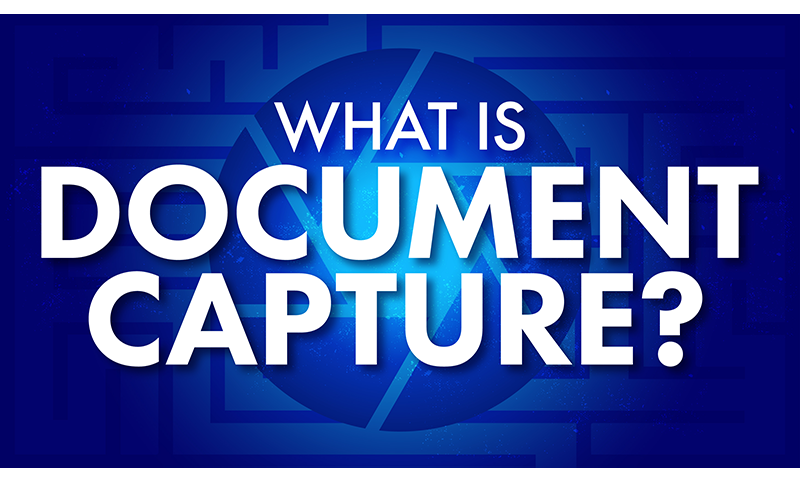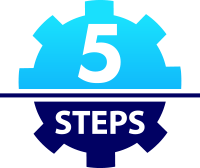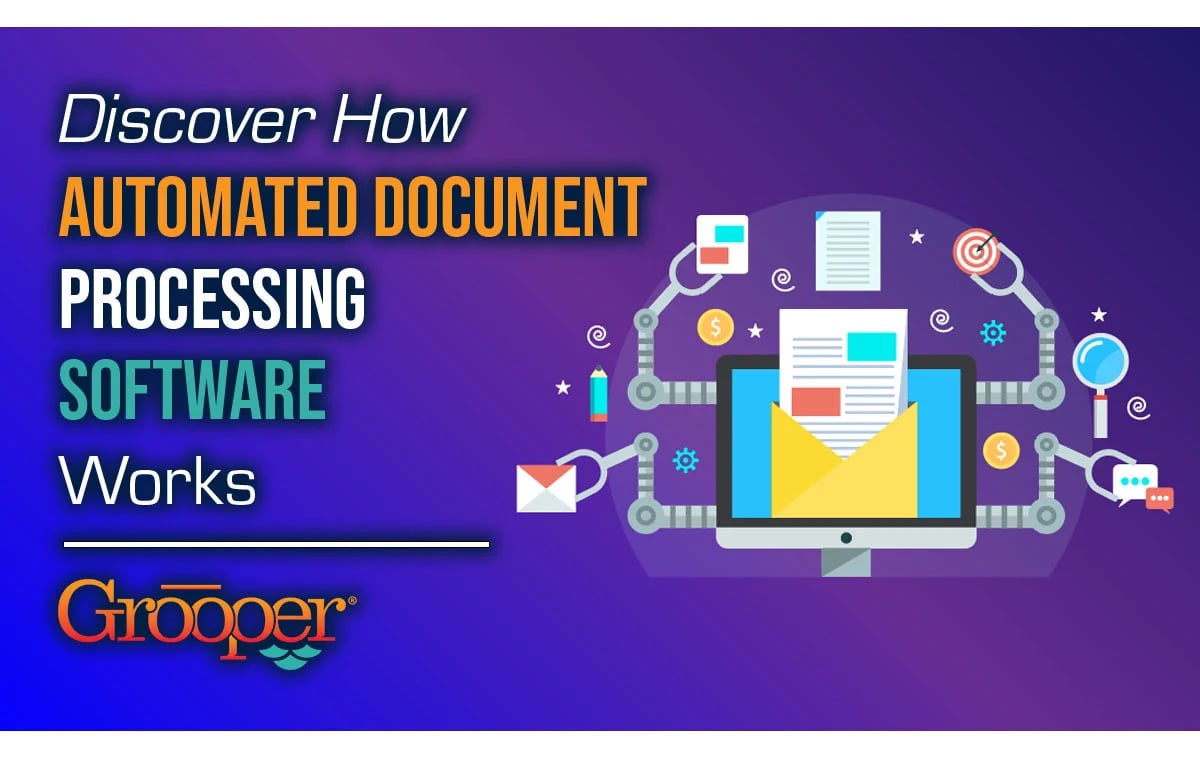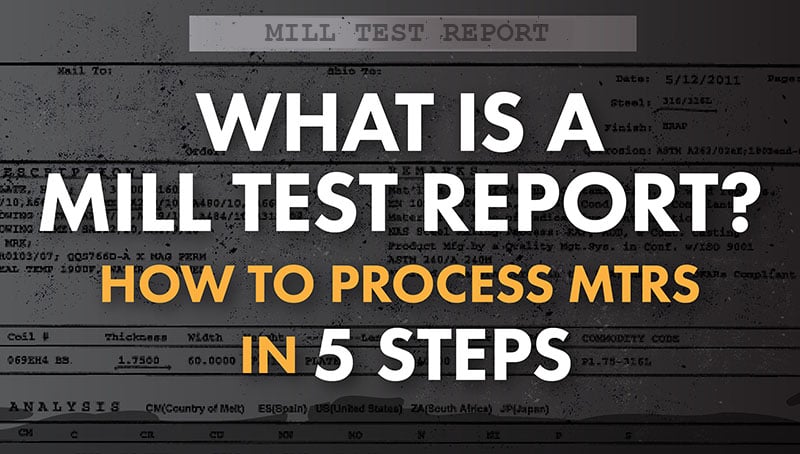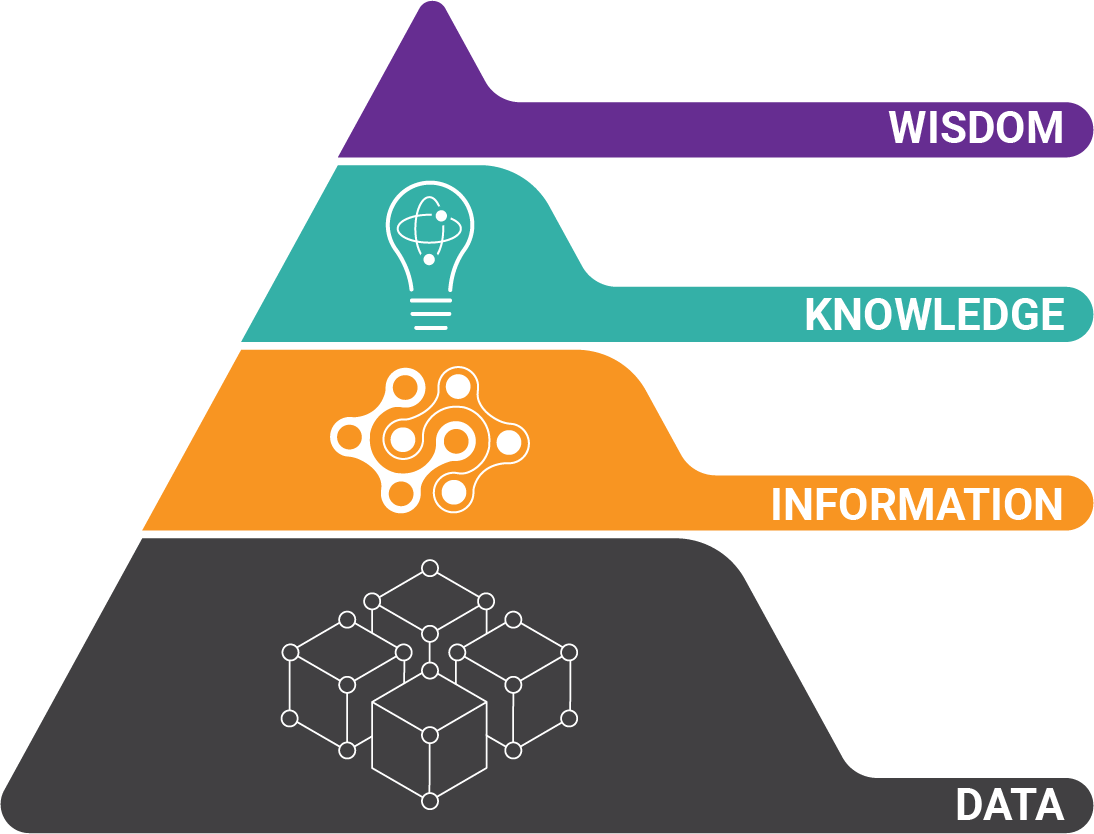Did you know that 76% of office workers spend 1 - 3 hours every day manually typing data from paper documents into a business system?
That same survey also found that 73% said they spend 1 - 3 hours daily searching for information on documents.
Document capture solutions eliminate these problems. Automating manual processes with document capture software allows large volumes of documents to be rapidly captured and imported into downstream business systems for usage, storage, and retrieval.
As a result, manual errors are almost eliminated. Office workers have much more time to spend on impactful work that will increase profits and decrease costs much more than manual data entry.
Table of Contents:
- How document capture works in 5 steps
- What is document capture?
- Guide: Secrets to Improved Document Capture
- Benefits of document capture software
- Difference between document capture and scanning
- Features of document capture
Free Guide: Unlock the Secrets to Improving Your
Document Capture Efficiency
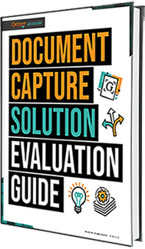
Significant differences separate old, legacy document capture from modern, cutting-edge capture software. Those differences are hurting your work efficiency.
Capture industry insider Tim McMullin gives you 8 critical factors in modern solutions that will make a huge difference. Get your guide to improve your workflow efficiency to new levels!
Be the document capture hero at your company! GET THE GUIDE:
How the Document Capture Process Works in 5 Steps
The process can vary depending on your documents and your organization's workflows. However, these steps (known as the 5 Phases of Document Capture to us at BIS) apply to most document capture systems:
- Capture / Import: Paper documents are scanned into the document capture software or imported through other electronic sources. These electronic source include email, sFTP, file folders, ECM systems, etc.
- Condition and Process Document Images: Several actions happen in this step, such as the capture software preparing scanned images for further processing by normalizing them to a standard format and cleaning up images. Clean up includes removing non-text features and straightening the images as mentioned above, for example).
Also, OCR and/or ICR are performed to extract text from the documents. This is a critical step in that the text from documents is what is used for the remaining steps. - Organize / Classify: Based on machine learning algorithms, the capture solution identifies and organizes your documents into a logical order. For example, the capture solution:
- Creates separate folders to hold invoices or purchase orders from different vendors
- Splits a single PDF into smaller documents based on different transactions that are contained in the larger file
- Sends documents to a human operator if there are any errors or documents that cannot be classified confidently

- Collect / Extract: Document capture software automates the process of recognizing and extracting the data you want from the classified documents. Metadata (keywords or index fields) are also extracted from documents to help you search for the document or data in your business system.
- Deliver / Export: Finally, the capture software exports your documents and data to the repository of your choice. This is an automated workflow.
Documents are formatted into the desired format (PDF, TIFF, etc.), and the data is directly inserted into the business system. In some cases, a formatted text file is created for import into systems that don't have a direct API available.
What is Document Capture?
 Document capture is the process of scanning paper documents, digitizing them, and then intelligently extracting the data for use in electronic data systems, such as Content Management Systems or Enterprise Resource Planning solutions.
Document capture is the process of scanning paper documents, digitizing them, and then intelligently extracting the data for use in electronic data systems, such as Content Management Systems or Enterprise Resource Planning solutions.
Document capture software extracts data from many image file formats (like JPG, PDF, and TIFF). The best capture software can extract data from any document structure, such as:
- Unstructured documents (land lease documents, other legal documents, or e-mails)
- Semi-structured documents (invoices or purchase orders)
- Highly structured documents (health or insurance forms)
In addition, these solutions can also extract data from electronic documents like EDI, CSV, XML, and MS Office documents. But for this blog, we will only address physical paper document capture.
After the documents are converted (scanned) and data extracted, the information is available in downstream business solutions for easy usage, search, and retrieval.
What's the Difference Between Document Capture and Document Scanning?
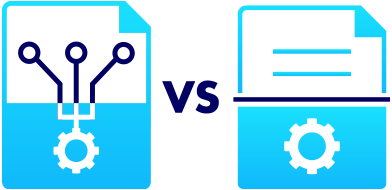 Document scanning and capture are similar and different in important ways.
Document scanning and capture are similar and different in important ways.
Document scanning uses a document scanner to convert a paper document into a digital version. A document scanner uses imaging equipment to essentially take a picture of the document, also known as a 'document image.'
The image can be in a PDF, JPG, PNG, or TIFF format.
| Document Scanning | Document Capture | |
| Takes an Image of Paper Documents | ✓ | |
| Converts Image Text to Digital Text | Sometimes, but very limited | ✓ |
| Imports Digital Text into Business Systems | ✓ | |
| Primarily Hardware or Software | Hardware | Software |
Document capture then takes the document images that were created in scanning and intelligently recognizes information on the images and converts it to digital text using a technique called Optical Character Recognition (OCR). That text can be imported into your ERP, ECS, or any other business system.
So, document scanning is a part of capture, but document capture is not a part of scanning.
In other words, a document scanning solution may not have any ability to extract data from your documents at all. Although these names are constantly evolving, and software manufacturers tend not to fall into neat categories, so this is a rule of thumb rather than a hard and fast rule.
How Does Scanning Affect Document Capture?
We've all heard the phrase, "Garbage in, Garbage out." This is especially true in document capture.
If a scanned document is poor quality (meaning it was scanned at low resolution or on a cheap scanner). extracting data becomes much more difficult. This is even more difficult with older systems that don't use current OCR technology.
However, if a document scan is high quality, it makes document capture much easier.
NOTE: If the scan quality is poor, capture software like Grooper has built-in methods to overcome bad quality and still accurately get your information. But if the image is particularly bad, no human or machine will be able to make sense of it!
For example:
- Full-color scans of the original document in a high resolution will produce great data capture results.
- Black-and-white scans of a previously scanned document with many blotches in a particularly low resolution will produce poor capture results.
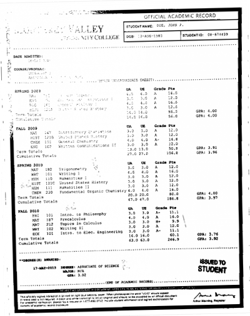
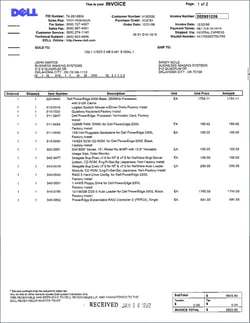
(An example of a poorly scanned document versus a high-quality scan.)
Benefits of Document Capture Software
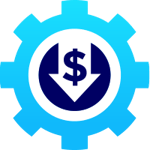 Reduced Costs
Reduced Costs
Document capture solutions reduce costs in several ways.
First, it reduces an organization's physical storage costs, as physical documents don't need to be stored once scanned. At least, documents can be relocated to cheaper off-site storage if the originals are required to be kept.
Several industries have these types of storage requirements, but off-site storage is always cheaper than housing documents in expensive office space.
The biggest savings, however, is in data entry. Employees are usually the biggest cost in an organization. So, utilizing expensive resources (employees) on tasks that can be automated is wasteful and inefficient.
Employees also dislike repetitive, mind-numbing work — and filling data entry positions is becoming more difficult. In fact, the US Bureau of Labor Statistics has projected negative growth for nearly all clerk jobs over the next ten years. Document capture helps you get the most out of your most expensive resources.
Furthermore, modern capture solutions provide even greater cost savings than older, legacy capture solutions. Modern document capture solutions extract far more data in less time, further reducing manual data work.
Accounts Payable Departments have specific examples of reduced costs. Document capture solutions can process invoices and related documents days or weeks faster. This helps companies:
- Attain early payment discounts
- Avoid late payment penalties
- Increase their creditworthiness
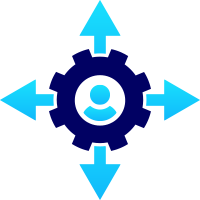 Improved Decision Making
Improved Decision Making
A document capture solution makes data-driven decision-making better because companies can gather much more data than they could in a manual process.
Need an example? Companies dealing with many vendors can get more data faster on those vendors, regardless of the vendor's invoice layout.
Some vendor invoice layouts or other documents (such as drilling reports in the oil and gas industry) are more difficult to extract due to:
- The quality of original documents (some industries have damaged documents prior to scanning)
- Poorly spaced data
- Complex table structures, etc.
However, modern document capture solutions can extract data regardless of layout or structure and help identify difficult vendors so they can be contacted and the issues resolved.
This helps organizations understand their vendors at a much deeper level. More data allows for deeper business analysis.
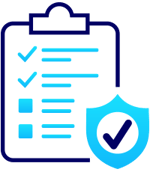 Easy Compliance Management
Easy Compliance Management
Electronically capturing documents massively helps organizations avoid the risk of losing their information. That's because it's difficult to back up paper documents.
Meanwhile, electronic documents can't be lost, destroyed, or filed incorrectly, as they can be easily found in their content management system and even more easily backed up.
Electronic records can be made accessible to only certain employees, so financial or personally identifiable information is secured.
Data needed for compliance can be aggregated automatically, drastically easing end-of-period reporting issues.
 Virtually Eliminate Human Errors
Virtually Eliminate Human Errors
This one is pretty simple. Human errors are nearly eliminated by automating what was once a manual process.
Even the best human operators still commit errors, especially when they feel ill or distracted.
Document capture systems also detect document errors through mathematical validation and other external validation methods. Those discrepancies can be sent to a human operator for further review and correction. Operators only have to correct where problems are detected.
Why is this so important? Because those errors create problems in downstream business workflows. Those problems can be costly to fix, so preventing them is hard to measure but highly valuable.
Features of Document Capture Software
There are thousands of different types of documents. As a result, the document capture software toolbox many several tools (or features) to capture data from various documents.
These include, but are not limited, to:
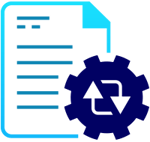 Image Processing (IP)
Image Processing (IP)
Document images produced in scanning must first be cleaned up to make OCR and data recognition accurate. For example, the image may include:
- Lines
- Hole punches
- Splotches that OCR may mistake for information
IP removes any non-text artifacts, straightens document images, and much more. Grooper's document imaging software uses more than 60 different IP commands to improve images.
IP also creates new document images in the proper format for the business process. For example, some file formats are "legally permissible," while others are not. In this way, high-resolution scans can be reduced to minimize storage requirements.
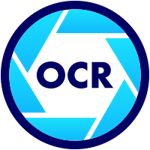 Optical Character Recognition (OCR)
Optical Character Recognition (OCR)
This is one of the most important tools that capture solutions use to extract data from document images. OCR recognizes virtually any style of machine-created text and converts it into a digital format that computers can read and use. OCR does not read handwriting (see ICR below).
By the way, Grooper has two patents from the US Patent and Trademark Office for its advanced OCR technologies:
- One patent is for Grooper's ability to improve basic OCR technology.
- The other patent recognizes Grooper's original OCR methods.
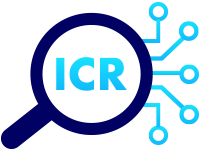 Intelligent Character Recognition (ICR)
Intelligent Character Recognition (ICR)
Compared to OCR, ICR is used by document capture software to recognize handwriting, not machine-printed text. To recognize letters or numbers, ICR looks for and analyzes certain features in handwriting, like:
- Lines
- Line intersections
- Closed loops
When data capture software runs both OCR and ICR, you can capture all machine-printed and handwritten data from your documents. Good examples are checks and handwritten forms, which have both handwriting and machine print.
Modern document capture solutions combine the results of OCR and ICR to give you a unified single output. Older, legacy capture systems can't perform both handwriting and machine print at the same time. Most don't have any ICR capability.
Optical Mark Recognition (OMR)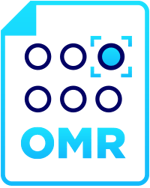
OMR technology captures specific data from forms, like checkmarks or bubbles. It looks for the label near the checkmark and extracts the label data and whether the mark or bubble is checked.
The most common real-world applications for OMR software are banks (for member application documents), healthcare (patient forms), and government forms and applications.
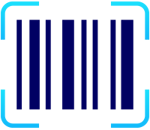 Barcode Recognition
Barcode Recognition
If any barcodes are present on documents, their data can be captured using specialized technology, extracted, and imported into business data repositories.
Barcodes can be found on business documents like invoices that contain payment tracking information or hospital healthcare documents for patients. Some newer barcodes can contain more than 1000 characters.
Natural Language Processing
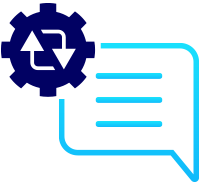 Natural Language Processing (NLP) is a huge field of study. But for document capture, it means the ability to extract meaning and information from text.
Natural Language Processing (NLP) is a huge field of study. But for document capture, it means the ability to extract meaning and information from text.
Recent innovations in AI have brought NLP technologies to the forefront in document capture. The big difference between document capture and intelligent document processing (IDP) is the use of AI technologies.
For that reason, NLP begins to bridge the gap between document capture and IDP.
Many current document capture systems are also IDP systems. There is a lot of crossover between the two types of systems. One of the biggest features of IDP over Document Capture is the use of "intelligent" technologies, like NLP.
As you can see, a document capture software solution helps streamline the capture and extraction of data from paper or electronic documents. Document capture is a mature, decades-old technology that can drastically help you lower costs and processing time in your organization.
Contact us today to learn how to get started!
About the Author: Tim McMullin
Tim McMullin brings extensive sales and solution design experience to help customers and partners successfully meet their business objectives.
With more than 25 years of technical and sales expertise in the enterprise document and data capture space, Tim is responsible for managing Grooper sales at BIS. His leadership focuses on the expansion of all things Grooper, especially the channel and traditionally underserved verticals.
